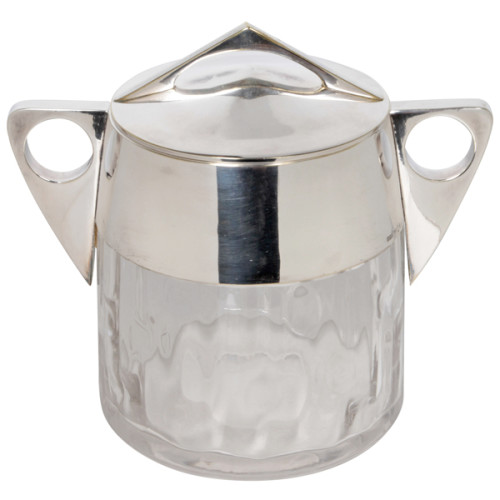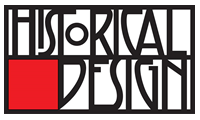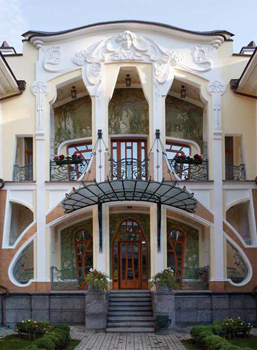Product Description
Gisela Falke von Lilienstein / Berndorfer Metallwarenfabrik Vienna Secession covered box c. 1902



GISELA VON FALKE (b. 1874) Austria
SCHOOL OF KOLO MOSER Austria
BERNDORFER METALLWARENFABRIK Berndorf, Austria
E. BAKALOWITS & SÖHNE Vienna, Austria [retailer]
Covered box c. 1902
Silver plate mounts and cover, blown “meteor” glass.
Marks: BEPWF 1481, maker’s touch marks
For more information on Berndorfer Metallwarenfabrik see: Blühender Jugendstil – Österreich (Art Nouveau in Blossom – Austria), Firmen und Marken (Companies and Marks), Waltraud Neuwirth, II (Vienna: Selbstverlag Neuwirth, 1991), p. 221; Metallkunst, Kunst vom Jugendstil zur Moderne (1889-1939), Karl H. Bröhan (Berlin: Bröhan Museum, 1990) pp. 20-44.
H: 7″ x W: 8″
Price: $9,000
Gisela Falke von Lilienstein / Berndorfer Metallwarenfabrik Vienna Secession covered box c. 1902
REINHOLD KLAUS (1881-1963) Vienna, Austria
CARL GEYLING ATELIER (founded 1841) Vienna, Austria
Man with tophat and flowers c. 1930
Window of stained and hand-painted leaded glass
Provenance: Estate of Carl Geyling (1814-1880), Vienna
H: 17 3/4″ x W: 14 1/2″
Reinhold Klaus studied from 1898-1902 with Alfred Roller at the Kaiserlich-Königliche Kunstgewerbeschule in Vienna. In 1914 Klaus married into the Carl Geyling family and became extensively involved with with stained glass painting. As early as 1918 Klaus worked on a stained glass window for the Siegestempel am Bisamberg in Vienna. In 1934 he became a professor of stained glass painting at the Kunstgewerbeschule, as well as creative director of the C. Geylings Erben glass painting company. Reinhold Klaus, a member of the Künstlerhaus since 1924 received many prizes and honors. He worked on commissions for the St. Veits cathedral in Prague, the St. Stephan cathedral in Vienna and many others.
JACQUES SICARD (décor) (1865-1923) France
WELLER POTTERY (form) Zanesville, OH
Vase c. 1901-1907
Earthenware with handpainted multicolored iridescent glaze
Other works by Sicard illustrated: Decorative Art 1880-1980, Dan Klein & Margaret Bishop (Oxford: Christie’s Ltd./Phaidon,1986) p. 109; The Ideal Home: 1900-1920, ed. Janet Kardon (New York: American Craft Museum, 1993) p. 166.
H: 9″
In 1902, Samuel Weller invited Sicard and his assistant Henri Gelie to Zanesville, where they developed a spectacular line of iridescent pottery called “Sicardo-Weller”. Sicard left the Weller Pottery in 1907 and never revealed the secrets to their copper-lustre glaze.
